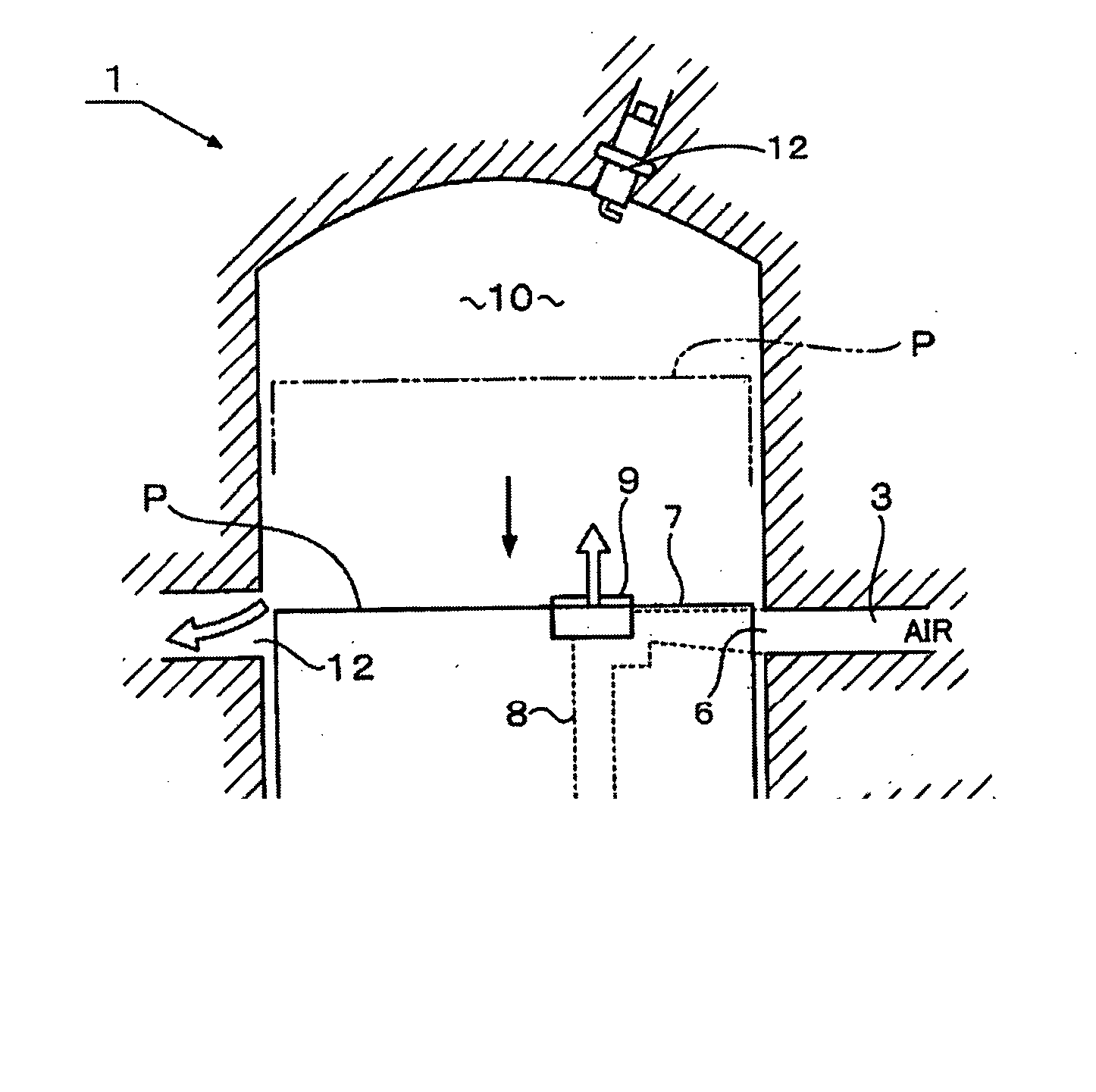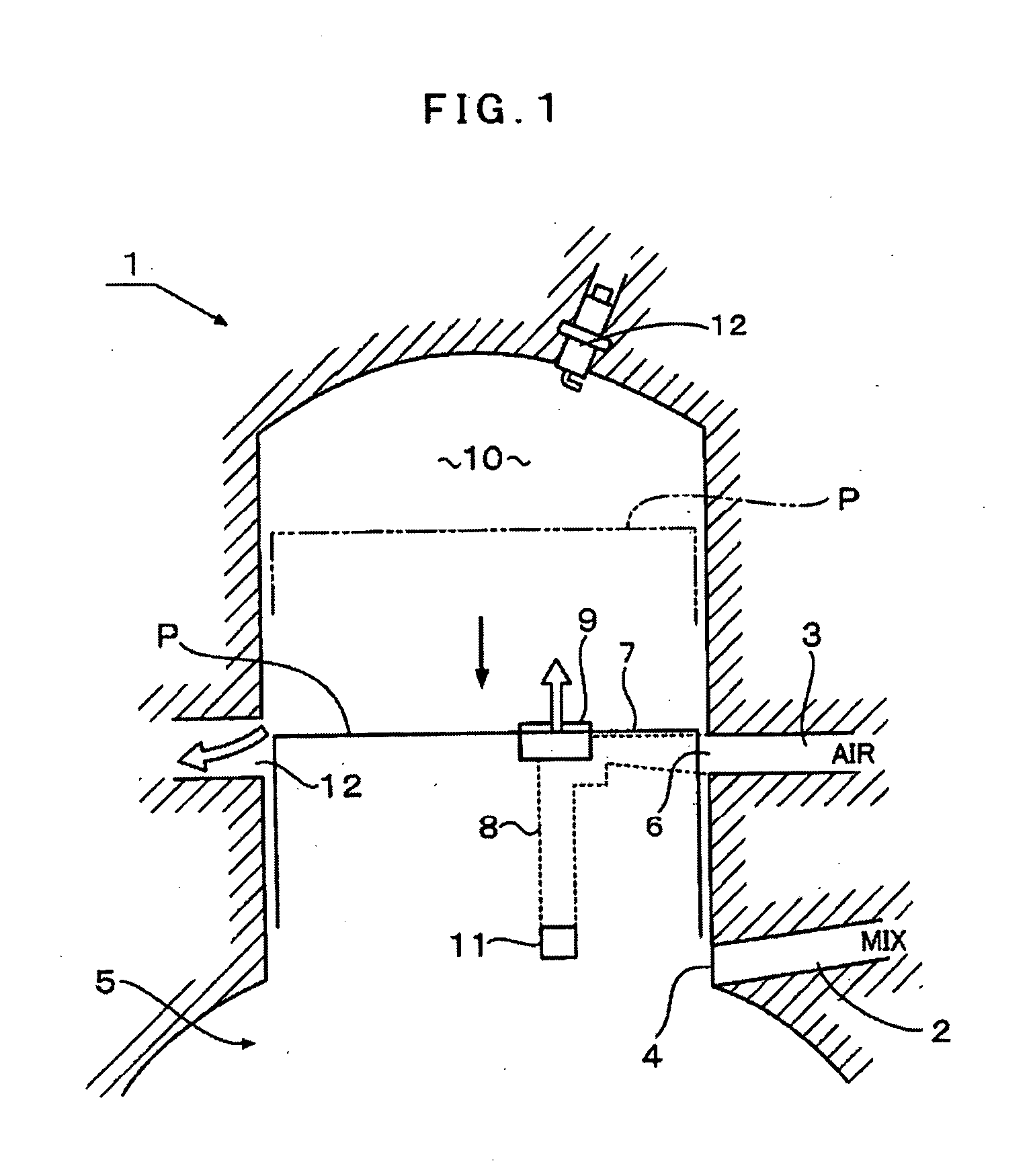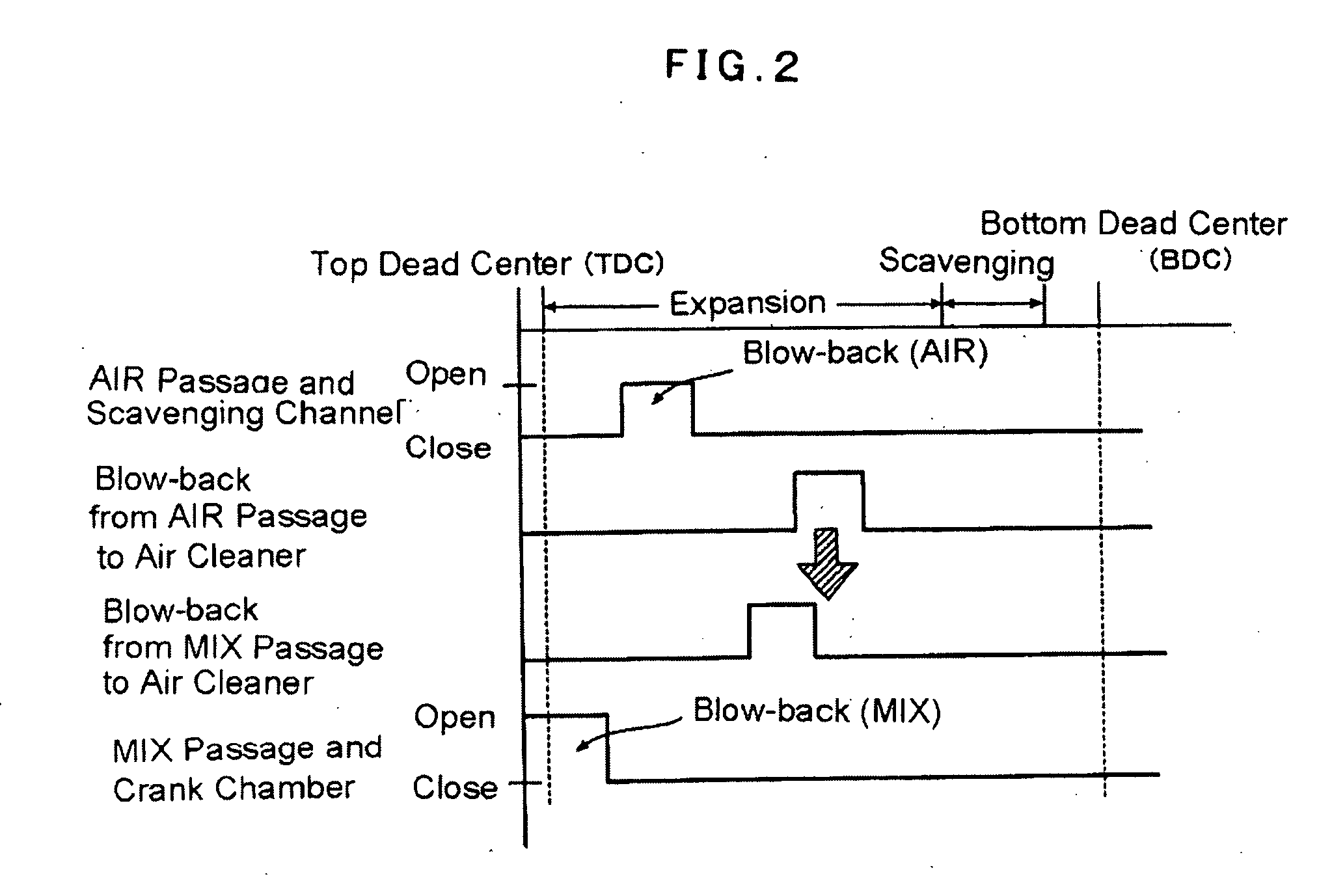Air Cleaner For Stratified-Scavenging Two-Stroke Internal Combustion Engine
a technology of air cleaner and internal combustion engine, which is applied in combustion-air/fuel-air treatment, liquid degasification, separation processes, etc., can solve the problems of increasing harmful elements (such as hc, co, etc.) in the exhaust gas discharged through the exhaust port of the cylinder port type two-stroke engine, and no valve mechanism dedicated to controlling the intake and exhaust functions
- Summary
- Abstract
- Description
- Claims
- Application Information
AI Technical Summary
Benefits of technology
Problems solved by technology
Method used
Image
Examples
first embodiment
FIGS. 18 Through 24
[0060]With reference to FIG. 18, a two-stroke internal combustion engine 100 is a gasoline engine fired by gasoline and an air-cooled engine having a single cylinder. This two-stroke gasoline engine 100 is a four-flow scavenging engine used in portable power working machines.
[0061]The engine 100 comprises a cylinder block 102 and a crankcase 103 connected under the cylinder block 102. A cylinder 104 formed in the cylinder block 102 fittingly, reciprocally accommodates a piston 105 that defines a combustion chamber 106 in the cylinder 104.
[0062]The combustion chamber 106 is of a squish dome design (hemispherical). At the top of the combustion chamber 106, an ignition plug 107 is located. The engine 100 further comprises a sealed crank chamber 108 defined by the crankcase 103.
[0063]The crank chamber 108 rotatably accommodates a crankshaft 109 supported on a pivot in the crankcase 103. The crankshaft 109 and the piston 105 are connected by a connection rod 110. Recip...
second embodiment
FIGS. 25 Through 32
[0080]The second embodiment is different from the first embodiment explained above only in the air cleaner 127, and common too the first embodiment in the other respects. Therefore, the following explanation is centered to differences from the first embodiment while omitting the common features by labeling them with common reference numerals.
[0081]The first air opening 140 in communication with the air passage 124 of the intake system 120 and the second air opening 141 in communication with the air-fuel mixture passage 125 are surrounded by the border uprising wall 142 like the first embodiment.
[0082]Unlike the first embodiment, the border uprising wall 142 has a uniform height over the entire circumference. As best shown in FIGS. 25 and 30, the guide member 150 used in the second embodiment has an elongated upside-down cup-shaped configuration. The first air opening 140 and the second air opening 141 are covered by the guide member 150 in a condition communicatin...
third embodiment
FIGS. 33 Through 40
[0087]The third embodiment is a modification of the second embodiment explained above. Its essential difference from the second embodiment lies in the shape of the guide member now labeled with 160. As best shown in FIG. 38, the guide member 160 used in the third embodiment has air induction tubes 161 corresponding to the air induction tubes 151 of the second embodiment. The air induction tubes 161 are oriented diagonal relative to the longer axis of the first air opening 140 having an elliptic configuration in its plan view, and extending directions of the air introduction tubes 161 orient toward the first air opening 140. Reference numeral 162 denotes an air induction channel defined by each air induction tube 161.
[0088]By diagonally orienting the air induction tubes 161, in the process where air is cleaned by the air cleaner element 138, then enters from the air induction tubes 161 into the space defined by the guide member 160 and is distributed to the first a...
PUM
| Property | Measurement | Unit |
|---|---|---|
| slanting angle | aaaaa | aaaaa |
| revolution speed | aaaaa | aaaaa |
| weight | aaaaa | aaaaa |
Abstract
Description
Claims
Application Information
 Login to View More
Login to View More - R&D
- Intellectual Property
- Life Sciences
- Materials
- Tech Scout
- Unparalleled Data Quality
- Higher Quality Content
- 60% Fewer Hallucinations
Browse by: Latest US Patents, China's latest patents, Technical Efficacy Thesaurus, Application Domain, Technology Topic, Popular Technical Reports.
© 2025 PatSnap. All rights reserved.Legal|Privacy policy|Modern Slavery Act Transparency Statement|Sitemap|About US| Contact US: help@patsnap.com



